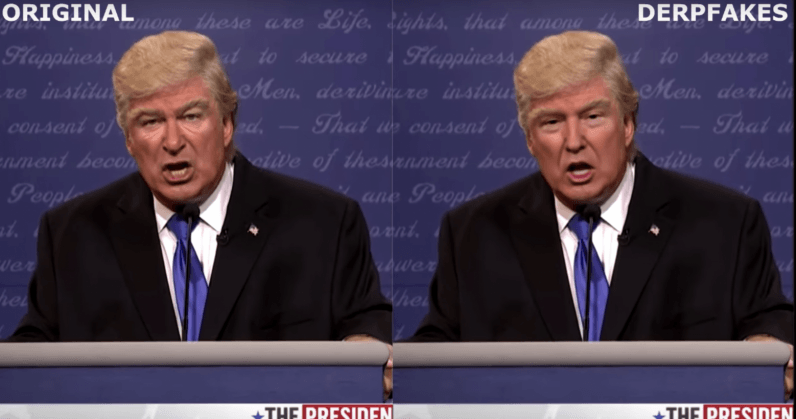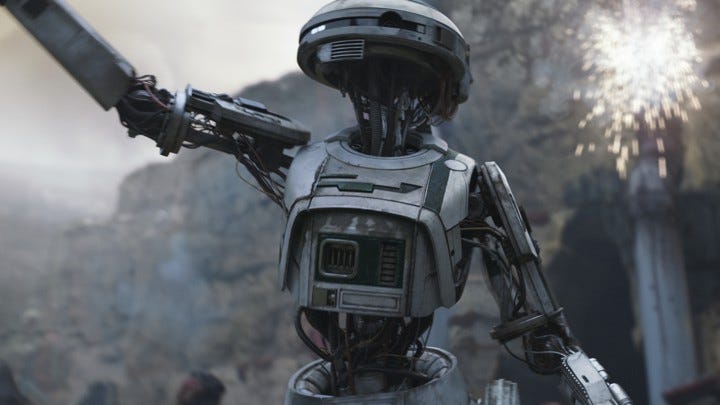In pursuit of defining ‘Robot’… and ‘Human’
In pursuit of defining ‘Robot’… and ‘Human’
Disclaimer: You could ignore extra stuff in the articles such as “Random Fandom” or “Sidenote”, these are just for fun and are not strictly related to the central message that I try to convey through these articles.
What exactly is ‘Robotics’ or a ‘Robot’ in the first place?
Jehoshaphat! That is not a simple question. This is a philosophical question perhaps. There is no good universal all-encompassing definition for the word ‘robot’. Don’t believe it? Okay, you’re in for a ride. Time for some food for thought!
Before that, a small clarification: ‘Robotics’ from a purely technical standpoint, although a highly interdisciplinary and wide field, can be categorized. Broadly speaking, it can be categorized into the following: Perception, Localization, Mapping, Path Planning, Kinematics, Control and Estimation; and applications of Machine Learning in these fields. This is certainly not a comprehensive categorization, for example, 3D Printing or Mechanical Design and several other fields could be included in the categorization. This will be addressed in detail with a brief explanation for each field in a fully dedicated article later on. For now, let’s get back to our definition.
Going by the Oxford dictionary definition first:
“A robot is a machine (something with definitive function that applies mechanical power to perform a task) capable of carrying out a complex series of actions automatically.”
Seems pretty straightforward. Or is it?
Consider the example of the KUKA Manipulator of the last Industrial revolution (simple repetitive pick and place — it’s just kinematics). No one possibly denies that this is a robot. Now, what about a printer or a microwave oven? These too are built such that they carry out “complex” actions “automatically”, all you do is send a simple command. In some ways, an oven could be considered more “complex” than a manipulator, then are these devices robots too? We perhaps subconsciously associate a form to robot, so we think a manipulator which looks like an arm is robot, while a printer is not.
This perception of ours arouses from Hollywood dystopian sci-fi movies. Basing our understanding on such fiction and being worried about Terminator-like uprising right now is absurd. Paraphrasing such fear-mongers’ concerns: “Matrix multiplication will exterminate us and should be banned.” As Andrew NG explains it the best,
“Worrying about evil AI robots today is a lot like worrying about overpopulation on the planet mars. You know, some day we might get to mars and we might actually overpopulate it and we’ll need to worry about it then. But today, we haven’t even landed on mars yet, so I don’t know how to productively work on that problem.” — Andrew NG


There are other more important AI risks at stake right now which we need to worry about now — Fake news, job displacement, DeepFakes, phishing scams, but surely not existential risks, we are very very far away from Artificial General Intelligence (AGI). Of course, there is no denying that these could as well have disastrous consequences. Just imagine the implications of this deadly combination — DeepFakes + Artificial Voice Cloning — The nature of evidence, or reality itself is no longer objective. Regulations centered around those specific applications are undoubtedly pressing, but having a doomsday-like perception of the definition will only pull the spotlight away from the real issues.
Random Fandom: Is it coincidental that the same GPU Tech which is used for gaming, is now threatening mass displacement of jobs? Well, I don’t think so. The world is evolving in such a way that we can game all day, all night by getting rid of these lousy jobs.
Let’s now examine the historical and literal definition, which was first used in the play Rossum’s Universal Robots (R.U.R) by Karel Čapek in the year 1921:
The term comes from a Czech word, robota, meaning “forced labor” from an Old Czech source akin to Old Church Slavonic rabota “servitude,” from rabu “slave,”…
The robots in R.U.R are biologically engineered — more of Westworld than Terminator. (Spoilers of R.U.R ahead! Proceed with caution.) Let us have a look at the philosophy behind the justification of replacing humans by robots (Keep in mind that this was written back in 1921, but this is so similar to the arguments that surround the growth of AI today.) —
“(Because of such industrial productivity), R.U.R (the company) will produce so much corn, so much cloth, so much everything that things will be practically without a price. There will be no poverty. Everybody will be free from worry and be liberated from the degradation of labor….
The servitude of man to man will cease. Of course, terrible things may happen at first, but that simply can’t be avoided… Man shall be free and supreme, he shall have no other aim than perfecting himself.. ”


At this point, the robots have no feelings — they do not feel pain or love, they are smart and efficient in very specific things, such as AlphaGo or self-driving cars of today — So perhaps, it is justified to treat them unfairly. But this is where it gets interesting — the human engineers induce more humane character, specifically pain and make them smarter — to make the robots avoid committing mistakes while doing industrial tasks. At this moment, the robots start becoming smarter in a much general way (AGI) and developing emotions (AGI?). However, the robots are still treated the same way, which ultimately leads to resentment among them. And yes, as you might have guessed, the human species (except one scientist) is wiped out. Two very important things to note here: One, they take a cue from human history to go on this murderous spree. The leader of the robot rebel group, Radius says the following to Alquist, the only remaining human —
“Slaughter and domination are necessary if you would be human beings. Read history.” (What a burn.)
And two, it is the unfair treatment by humans that ultimately leads to this scenario. Keep in mind that the Robots are very human at this point, they’re just another class of human species. Then, perhaps the problem lies within ourselves.
Sidenote: However, the process of making robots is a secret and the robots, in an effort to ensure the continuation of their species (They’re infertile even now), plead Alquist to reveal it to them, who has to experiment by dissecting the robots to figure out this secret. Two robots Helena and Primus fall in love, and soon, Helena’s turn comes to go to the dissecting room, when Primus offers to sacrifice his life instead. Awed by this noble deed, Alquist says “Go, Adam. Go, Eve. The world is yours.” And that’s it. The play ends right there. See, I am a weirdo who does not understand love. In addition to that, this ends so abruptly that I perhaps wasn’t wise enough to connect the dots. Such unsatisfactory endings of stories trigger an implosion clock inside me, so if you could understand what the ending actually means, please feel free to discuss.
We already have such a class of humans — Dalits. (Note: No offence to be taken here, that is the very meaning of the word ‘Dalit’, a sad reality even today in India. However, it’s heartening to see the robots replacing their jobs. Read the previous sentence again ignoring the context.) Yes, the problem lies within ourselves. Therefore, the word ‘robot’ is not a misnomer, rather the literal definition is meant to serve as a reflection upon the human’s whole character as a whole. As AGI approaches closer, how ethical is it to employ forced labour on the mere distinction of C/Fe?
As an extension of analysis in the preceding paragraphs, let us consider the Turing test now. Arguably, there are bots which have already passed the test, to a certain extent at least. Google’s Duplex has blown our minds recently. Social bots have perhaps influenced your mind already. You might not have realized despite falling prey to it — The line between who is a human and a robot is getting fainter as you read this article. (“I find your lack of faith disturbing.”)
Therefore, we should be asking a more fundamental question first before defining a robot:
What does it mean to be a human? What is the difference between YOU and a sentient robot?
Is it the flesh and the bones? Is it the intellectual capabilities? Is it the sentience? Is it the emotions? Do we even know what emotions, feelings are, what love really is?
And that is the ultimate quest of humanity, it is to seek answers to such questions and to ultimately, to figure out the working of the most complicated mechanism on the planet — the brain, a manifestation of 4 billion years of evolution. With the advent of technologies such as Deep Learning, we are already on course to seek the answer. Hell yeah, the future is exciting!
In a quest to achieve these technological (yet philosophical) feats, we shall rediscover ourselves and reformulate our social, economic, judicial and political systems. By leveraging the power of AI, we shall put an end to all the suffering in this world and make sure it won’t be misused. This is not wishful thinking, it is already happening. In this process of transformation, we shall seek what it truly means to be a human and learn to embrace this life.
“In this holy reality, in this holy experience (of life)..
Twirling round with this familiar parableSpinning, weaving round each new experienceRecognize this as a holy gift and celebrate this chance to be alive and breathingA chance to be alive and breathing
This body holding me reminds me of my own mortalityEmbrace this moment, remember, we are eternalAll this pain is an illusion”
-James Maynard Keenan
